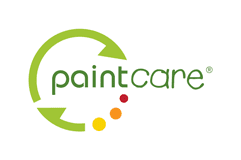2016 Annual Report
American Coatings Association Year in Review Scroll down to read more or click here to download the full reportA Message from the President

Dear Members,
As we start a new year and look forward to what 2017 will bring, let’s look back at some of the key areas of focus for ACA in 2016.
This Annual Report highlights five focal areas where ACA’s efforts and programs brought about change, or laid the groundwork for future transformation.
These include:
- Toxic Substances Control Act (TSCA) Reform
- Civil Justice Reform
- PaintCare®
- American Coatings SHOW & CONFERENCE
- International Paint and Printing Ink Council
In addition, in 2016 the association pursued several strategic initiatives identified by the Board of Directors including a reorganization of ACA’s committee structure, a review of our international and science and technology programs, and an update of our mission statement.
This Annual Report also includes a listing of ACA’s 2016 Accomplishments, showcasing the breadth and triumphs of ACA’s efforts and engagement.
We are proud of another year of serving the coatings industry and are eager to continue our success in 2017. Undoubtedly, the year will bring additional challenges and opportunities; with your support, ACA remains ready to meet them.
![]()
TOP 5
HIGHLIGHTS
This year ACA continued its advocacy efforts to promote
industry’s interests both domestically and internationally, with
increased engagement. Read more about what we’ve undertaken and achieved in 2016.
2016 In Review
TSCA - Toxic substances Control Act
Following six years of federal advocacy and coalition building, ACA efforts to modernize the nation’s reigning chemicals management law — the Toxic Substances Control Act (TSCA) — culminated in passage of the Frank L. Lautenberg Chemical Safety for the 21st Century Act last summer. This marathon endeavor marks the first time …Continued here
Civil Justice Reform
In 2016, ACA pursued its Board-approved, multi-year strategy for civil justice reform at the federal level. ACA believes that reform is needed to restore balance, fairness, and predictability to our judicial system. A uniform national solution is necessary because ….Continued here
PaintCare®
ACA’s PaintCare® — the industry-led end-of-life management program for post-consumer paint — continued to grow and refine itself over the last year. On Nov. 1, 2016, the District of Columbia PaintCare® program launched, joining eight other states with successful operations … Continued here
AC SHOW & CONFERENCE
ACA has become a leading provider of science and technology information and programs to the paint and coatings industry, addressing the current and future needs of coatings industry scientists and technologists through its biennial American Coatings SHOW & CONFERENCE, among its other events and programming … Continued here
International Paint & Printing Ink Council
As the U.S. paint and coatings industry expands its international footprint, and as international regulations influence U.S. policy, ACA continues to engage in various international affairs activities to increase the ability of the U.S. industry to support a global customer base… Continued here
Toxic Substances Control Act

Former Senator Frank L. Lautenberg
…passage of the Frank L. Lautenberg Chemical Safety for the 21st Century Act … was achieved by ACA’s staunch and abiding commitment to rally bipartisan support in Congress.
Following more than six years of federal advocacy and coalition building, ACA efforts to modernize the nation’s reigning chemicals control law — the Toxic Substances Control Act (TSCA) — culminated in passage of the Frank L. Lautenberg Chemical Safety for the 21st Century Act last summer. This marathon endeavor, supported by industry, environmental and public health groups alike, marks the first time the law has been updated since its enactment 40 years ago, and was achieved by ACA’s staunch and abiding commitment to rally bipartisan support in Congress.
The History of TSCA
Enacted in 1976, TSCA was designed to protect the public from unreasonable risk of injury to public health or the environment by regulating the manufacture, import and sale of chemicals. The statute includes provisions for the regulation of existing chemicals, new chemicals being introduced to the market, reporting of chemical data to the U.S. Environmental Protection Agency (EPA), Confidential Business Information (CBI) protections, import and export rules, and provisions for chemical testing. While the law created a comprehensive system of regulations, TSCA’s core provisions had never been updated. Many chemicals in the market have never been evaluated for safety because EPA had not reviewed a majority of chemicals in commerce that were grandfathered into the inventory. These deficiencies have fueled environmental and human health groups to pressure states to adopt “Green Chemistry” laws in the absence of federal action on TSCA. As such, many states have created their own chemicals management laws that have begun to create an inconsistent regulatory landscape across the country. In fact, 2016 saw the introduction of more than 60 pieces of state legislation focusing on chemicals, ranging from bisphenol A (BPA), to mercury, to flame retardants. With the passage of TSCA reform in 2016, state-level chemicals management legislation will hopefully decrease in the coming years.
ACA Takes Action
All ACA member companies are regulated under TSCA, as well as state chemical regulations. As such, the association has made TSCA reform a top priority: in 2015 alone, ACA met with over 70 Congressional offices on reforming TSCA, and participated in more than 80 coalition meetings with staff and members, which led to passage of both the House and Senate bills by the end of 2015. Those efforts continued in 2016 with ACA carrying on meetings on Capitol Hill and working through the American Alliance for Innovation coalition, pursuing an advocacy strategy of Congressional lobbying. The message to Congress: working together to create a strong federal chemicals management program that provides consistency in the marketplace is essential to avoid a patchwork of varied state chemicals management regulations.
Throughout 2016, at industry and ACA urging, members of the House Energy and Commerce Committee and the Senate Environment and Public Works Committee worked for months on a final bill that reconciled the disparate House and Senate versions. The final bill did not go through a formal conference committee process, but rather, informal negotiations so more members of Congress could be involved. Ultimately, members across the aisle and in both Chambers reached a compromise and released a final bill on May 20, 2016. The bill passed the House quickly with an overwhelming vote of 398-1. In the following weeks, the compromise bill passed the Senate via voice vote, and the bill was signed by President Obama on June 22, 2016.
The ”New” TSCA
The TSCA amendments create a robust, risk-based chemicals management process that now provides EPA the resources it needs to review chemicals for safety through review deadlines and the mandate of strict science-based standards. Importantly, the statute strengthens federal pre-emption of state laws giving industry more certainty once EPA has begun chemical reviews and makes final safety determinations. The law strikes a balance so that states still play an important role in regulating chemicals.
Since TSCA re-enactment, ACA has held detailed webinars for the membership summarizing the updated TSCA law, and distributed memoranda explaining the components of the new law — which parts of the bill go into effect immediately, and which aspects will emerge through the rulemaking process.
As of this writing, EPA is under mandate to issue four proposed rules by Dec. 22, 2016 outlining: 1) the chemical prioritization process; 2) the risk evaluation process; 3) new user fees under TSCA Sections 4,5, and 6; and 4) a proposed rule that would reset the TSCA inventory.
As the regulatory process ramps up, ACA will assist members in understanding their new obligations under a modernized TSCA, and will participate in the regulatory process as EPA implements the statute’s new provisions. ■ Return to 2016 in Review
Civil Justice Reform
In 2016, ACA pursued its Board-approved, multi-year strategy for civil justice reform at the federal level. ACA believes that reform is needed to restore balance, fairness, and predictability to our judicial system. A uniform national solution is necessary, because individual states are powerless to provide a comprehensive remedy — one state cannot dictate judicial or legislative policies to another state. Congressional action on tort reform would protect the due process rights of corporate defendants without infringing upon the rights of injured plaintiffs to be compensated.
Toward that end, the association focused on its burgeoning advocacy effort — the Minimum Diversity Project — dedicated to ensuring fair and expeditious access to federal courts for resolving interstate (diversity) disputes, spearheaded by the Access to the Courts Initiative (ACI). ACA is a founding member of ACI, which seeks to systematically inform the public, and properly influence courts. Additionally, ACI intends to press Congress for legislative reinforcement, noting that the actual wording of the U.S. Constitution and the writings of the founders clearly instruct that defendants are entitled, by right, to the assurance of fair trials for such disputes by having them heard in impartial federal courts, if desired. The goal is to find a way out of damaging, mass-tort litigation by increasing the number of diversity cases removable to federal court. In addition, encouraging Congress to finish the work it started when it passed the Class Action Fairness Act (CAFA) will provide a neutral forum for out-of-state defendants.
ACA is urging Congress to make minimum diversity a requirement for diversity jurisdiction in federal court, instead of the current requirement that all parties to a suit be from different states.
Progress in 2016
This year, ACA secured an “issues” hearing on Sept.13 in the U.S. House of Representatives’ Judiciary Committee’s Subcommittee on the Constitution and Civil Justice to explore the concept of “minimal diversity.” An issues hearing explores the general topic and was not a “legislative” hearing on a particular bill.
Notably, the issue hearing was well-attended, which is rare for such a complex civil procedure topic. Full Committee Chairman Bob Goodlatte (R-Va.) introduced the issue discussion, summing up the reality of this judicial pitfall, and urgency of Congressional action in this area.
“Currently, when a citizen from one state sues a defendant from another state, the inter-state nature of that lawsuit gives federal courts jurisdiction over the case,” stated Chairman Goodlatte. “While the Constitution provides that Congress can grant federal courts jurisdiction over all such cases — cases involving what lawyers refer to as “minimal diversity” — a glitch in current statutory law allows trial lawyers to forum shop, and keep their cases in state courts they prefer, if they sue a defendant from another state, and simply also sue an additional local defendant in the state in which they’re filing the case.
Not surprisingly, these rules have been abused by trial lawyers who sue local defendants — even though the plaintiff’s claims against those defendants have little or no support in fact or law — because suing those local defendants allows trial lawyers to keep their case in a preferred state court forum.”
ACA considers the hearing an important step toward setting the predicate for legislative reform introduced, conceivably, in the next Congress. ■ Return to 2016 in Review
PaintCare®
is a true environmental success story for the paint industry
MANUFACTURERS
These companies are registered and participating in 9 active programs (8 states and the District of Columbia).
PAINT DROP-OFF SITES
Depending on the state, 93-100% of households and businesses have a place to drop off leftover paint within 15 miles.
GALLONS COLLECTED
Approximately 75 percent is latex paint, and 25 percent is oil-based paint.

ACA’s PaintCare® — the industry-led end-of-life management program for post-consumer paint — continued to grow and refine itself over the last year. On Nov. 1, 2016, the District of Columbia PaintCare® program launched, joining eight states with successful operations. Prior to program commencement, ACA secured necessary changes to the District of Columbia’s regulation for hazardous wastes in order to enable contractors to return leftover paint to PaintCare® drop-off sites without imposing undue burdensome requirements. PaintCare®’s first operations began in Oregon in July 2010, and the program has rapidly expanded since then, with California launching in 2012; Connecticut in 2013; Minnesota, Rhode Island, and Vermont in 2014; and Colorado and Maine in 2015.
PaintCare® undertakes responsibility for ensuring an environmentally sound and cost-effective program by developing and implementing strategies to reduce the generation of post-consumer architectural paint; promoting the reuse of post-consumer architectural paint; and providing for the collection, transport, and processing of post-consumer architectural paint using the hierarchy of “reduce, reuse, recycle,” and proper disposal. In addition to partnering with local government programs to collect paint, PaintCare® establishes retail drop-off locations throughout states with paint stewardship laws, increasing convenience for consumers and relieving local governments of the financial burden of managing leftover paint.
PaintCare® Expansion Plans
ACA continues to seek the expansion of its progressive, industry-run program. In 2016, ACA succeeded in having PaintCare® legislation introduced in the Massachusetts Legislature. The bill passed the Senate, but remains in the Ways and Means Committee in the House. Pursuit of passage will continue in 2017 when the bill is reintroduced.
In the New Jersey Legislature, bills for the establishment of a PaintCare® program passed the Senate and are progressing in the Assembly. The bills have received widespread support from the Association of New Jersey Household Hazardous Waste Coordinators and the New Jersey Association of Recyclers.
In Washington State, where ACA has been pressing for a program for five years, PaintCare® legislation was reported favorably out of the House, but stalled in committee in the Senate this year. ACA will work to reintroduce PaintCare® legislation in 2017. In New York, PaintCare® legislation passed the Senate unanimously but did not make it to the floor in the Assembly. In Utah and Maryland, PaintCare® legislation was introduced and sent to study.
PaintCare®’s Assessment Structure
For the first six years of the program, PaintCare® was able to keep a uniform assessment (fee) structure in all PaintCare® states: 35 cents for pints and quarts; 75 cents for one gallon containers; and $1.60 for larger than one gallon up to 5-gallon containers. This year, PaintCare® introduced new structures for some of the programs.
A change to the Vermont program was necessary due to its surprisingly high paint recovery rate in the program’s first two years — more than double that of most other PaintCare® states. The fees in Vermont increased on Aug. 1 to 49 cents for pints and quarts, 99 cents for 1 gallon; and $1.99 for larger than one gallon up to 5 gallons.
The Minnesota program, which celebrated its two-year anniversary on Nov. 1, is experiencing a similarly high recovery rate, and a similar fee structure as Vermont’s is being proposed there, with a slight revision as a result of lessons learned while developing the District of Columbia’s program.
The proposed fee structure in Minnesota is 49 cents for pints and quarts, 99 cents for 1-2 gallons, and $1.99 for larger than 2 gallons up to 5 gallons. Pending state approval, the fee structure will take effect in spring 2017.
The Oregon program, the longest-running PaintCare® program, has grown steadily since its start, with increasing paint volumes collected each year. As a result, a fee increase there is necessary to sustain the program. The proposed fee structure for Oregon is 45 cents for pints and quarts, 95 cents for 1-2 gallons, and $1.95 for larger than 2 gallons up to 5 gallons. This is the same fee structure as the District of Columbia’s program, where paint management costs will be higher per unit, due to the small size of the program. Pending state approval, the Oregon fee structure will also take effect in spring 2017.
PaintCare®’s Success
PaintCare® is a true environmental success story for the paint industry: the program now has some 200 manufacturers registered and participating in the program, and across the nine programs in the eight active states and District of Columbia, it has 1,700 year-round paint drop-off sites, the large majority of which are paint retailers. These sites provide access for post-consumer paint drop-off within 15 miles of most residents in each program. Incredibly, the program has collected and recycled (or responsibly managed) more than 17 million gallons of post-consumer paint, of which approximately 75 percent is latex paint, and 25 percent is oil-based paint. ■ Return to 2016 in Review
American Coatings SHOW & CONFERENCE
AC SHOW & CONFERENCE by the Numbers

96 TECHNICAL PRESENTATIONS

1,100 PEOPLE ATTENDED AC CONFERENCE

27 STUDENTS SPONSORED

300 FUN RUN PARTICIPANTS

9,100 TOTAL ATTENDEES AC SHOW

559 EXHIBITORS
ACA has become a leading provider of science and technology information and programs to the paint and coatings industry, addressing the current and future needs of coatings industry scientists and technologists through its biennial American Coatings show & conference, among its other events and programming.
American Coatings CONFERENCE
In 2016, ACA hosted its fifth American Coatings conference (ACC), providing an unparalleled technical forum for industry and showcasing the latest in industry R&D. The event had record attendance: approximately 1,100 people attended the two-and-a-half-day technical conference. The 2016 conference featured 96 technical presentations, several of which were “standing room only,” and 10 pre-conference tutorials, some of which were sold-out. Moreover, a special session at the ACC was developed by the National Science Foundation and featured work done under open innovation grants in technologies directly related to coatings science.
In addition, ACA organized support for 27 student researchers who offered presentations or posters on their work at the ACC. ACA also organized the event’s inaugural “Fun Run,” which raised funds to support student attendance at future ACC events. Industry support was phenomenal, with over 300 enthusiastic participants.
American Coatings SHOW
Held in tandem with the conference, ACA’s 2016 American Coatings show (ACS) was the most successful event in ACS history: 9,100 total attendees were present – compared to 8,700 in 2014; there were a total of 559 exhibitors – compared to 475 in 2014; and the total net square footage of exhibition floor space was 130,000 sq. ft. – compared to 110,000 in 2014. Additionally, international participation continues to grow in every aspect and, in 2016, represented approximately 20 percent of exhibitors and attendees at the show.
Anticipating further growth and a larger audience, planning is already underway for the next American Coatings SHOW & CONFERENCE, which will be held April 9-12, 2018 in Indianapolis, Ind. ■ Return to 2016 in Review
IPPIC – International Paint & Printing Council
As the U.S. paint and coatings industry expands its international footprint, and as international regulations influence U.S. policy, ACA continues to engage in various international affairs activities to increase the ability of the U.S. industry to support a global customer base. Much of ACA’s international efforts are focused through its role as Secretariat for the International Paint and Printing Ink Council, Inc. (IPPIC), and ACA leadership of IPPIC stimulates and advances consideration of international issue management. ACA continually seeks opportunities to strengthen the industry’s global advocacy positions and profile at international forums, and expand direct relationships with other industry organizations working toward common purposes in the international arena. Notably, IPPIC has official consultative status with the United Nations and its aligned organizations: the International Maritime Organization (IMO), World Health Organization (WHO), and Industrial Development Organization (UNIDO).
In 2016, ACA leveraged its international efforts through IPPIC, as Secretariat, and focused on the following
Microplastics in the Environment
Microplastics are small pieces of plastic, typically less than 5 mm in size, which cannot be filtered by water treatment facilities. After they are discharged to the marine environment, microplastics present a potential health risk to marine animals and could also enter the food supply. While the United States has not been as focused on microplastics (beyond the narrow plastic microbeads in personal care issues), several European countries — Norway, Netherlands, Germany and Austria — have begun to study the sources and impacts of microplastics in the environment. The Norwegian study cites wear and tear on tires as one of the largest sources, but cites three sources from the paint and coatings industry: 1) maritime coatings, 2) protective outdoor coatings and road paint, and 3) the illegal dumping of paint. While the study’s data and assumptions are questionable, it states that the use in paint and coatings represents 25 percent of the microplastics generated annually in Norway. ACA, through IPPIC, has commissioned a position paper on the critical role of biocides in paints and coatings, the regulatory process safeguards, and ongoing product stewardship, for use with governments and research organizations.
Supply-Chain Management
This year, ACA and IPPIC adopted a policy statement for industry after being made aware of a published report on child labor use for the mining of natural mica in India. The report accurately noted the use of natural mica in the preparation of certain types of pigments used in cosmetics and paints, and the industry statement noted what the report affirms: there have been considerable efforts made by all parties in the supply chain to exercise due diligence and effect change in the practice of child labor. These efforts will continue, and IPPIC and its members fully support the recommendations for industry action detailed in the report. IPPIC continues to identify potential outlets for wider industry support on India’s child labor
issues, working with national associations in India and identified supplier industry programs already in place; and is also engaging NGO’s and business partners to increase awareness of supply-chain issues, tracking supportive actions and identifying feasible support.
Nanotechnology Standards
The emerging industry use of nanotechnology and nanomaterials has raised questions about unfamiliar risks associated with both. To date, IPPIC’s interests have been to ensure that the terminology used to describe nanotechnology in these emerging standards does not categorically include all paints and coatings as “nanomaterials” simply because they use (and have long used) raw materials that contain “nano-size” particles. This effort has been largely successful in keeping typical paint and coatings products from potential regulatory scrutiny as “nanomaterials.”
Demonstrating the value of coordinated global advocacy, ACA and fellow IPPIC member FIPEC (French association) are working with the International Organization for Standardization (ISO) to clarify technical terms the organization uses for nanotechnology standards, specifically the TC229 standard.
Moving Forward
ACA and IPPIC will continue to work on the aforementioned issues in 2017, as well as coordinate efforts with the UN’s Lead Paint Alliance to establish and enforce legal restrictions on lead use in residential and decorative paints, and also share technical information and advocacy approaches to address public concern about paint’s contribution to indoor air quality. ■ Return to 2016 in Review
2016
Accomplishments
In addition to the detailed areas of focus for 2016, the association achieved success with other industry-related issues and endeavors.
Product Labeling
ACA successfully advocated for changes to California’s Proposition 65 “Clear and Reasonable Warning”regulations. As a result of ACA’s engagement with the Office of Environmental Health Hazard Assessment, the new regulations include an unlimited sell-through period; language protecting manufacturers from obligations to warn online; font-size considerations for smaller packages; short, safe-harbor language for on-product warnings that do not require chemical disclosure; and language allowing employers to provide warnings to employees according to OSHA’s revised Hazard Communication Standard (HCS 2012).
ACA and its California Paint Council successfully defeated an ingredient disclosure bill introduced in the California Assembly. Assembly Bill 708 would have required manufacturers to disclose the 20 most prevalent ingredients contained in the product by posting the ingredient list on the product label, and if a product contained more than 20 ingredients, indicate on the label that those are available on the manufacturer’s website. The legislation did not provide for Confidential Business Information (CBI) protections and conflicted with other federal labeling laws.
Clean Air & Environment
ACA secured important changes to proposed and amended VOC regulations for architectural and industrial maintenance (AIM) coatings at the state and local level, including rule makings in Maryland, Delaware and California’s Yolo Solano Air Quality Management District. Due to ACA’s advocacy efforts, these rules now include additional compliance time for industry, and more favorable rule language and provisions. ACA also successfully advocated for longer compliance dates to implement lower VOC limits for Paint Thinners and Multipurpose Solvents in Delaware and Maryland.
Because of ACA’s advocacy efforts, California’s South Coast Air Quality Management District’s (SCAQMD) amended Rule 1113 maintained the Small Container Exemption (SCE) for several categories (granted the district’s smaller size allowance included touch-up only requirements); longer compliance dates; and additional sell-through time for existing products. In addition, ACA convinced the district to complete a “round-robin” study to better understand method precision for the two newly included VOC test methods — ASTM D6886 and SCAQMD Method 313 — as well as an “exclusion pathway,” to potentially exclude non-volatile compounds.
ACA comments on Maricopa County Arizona’s supplemental proposed rule making, Rule 345 for Vehicle and Mobile Equipment Coating, spurred the county’s air district to adjust many of the proposed changes, including removing the process of “spot repair” from the table of VOC limits.
After more than three years of engagement, ACA convinced Ohio EPA to develop universal waste regulations — similar to those in Texas — for paint and paint-related wastes, including used or unused paint, spent solvents, debris, and cleanup residues resulting from painting operations. ACA believes that Ohio and Texas can serve as models for the rest of the country for analogous universal waste regulations.
ACA convinced the Utah Department of Environmental Quality to reconsider changes to the applicability of the state’s surface coating rules, which would have greatly increased the liability of coatings manufacturers and distributors for end-user use of non-compliant products.
ACA persuaded Ohio, Indiana, Illinois, Maryland, Wisconsin, Delaware, Texas, Missouri, North Carolina, and Virginia to either exempt coatings, ink, adhesive, and resin manufacturing operations from their industrial solvent cleaning rules, or adopt more reasonable alternative language. ACA is also working with Pennsylvania, New Jersey, Massachusetts and Colorado to include more reasonable industrial cleaning solvent rule provisions.
ACA published an independent Toxic Release Inventory (TRI) analysis of both the entire coatings manufacturing industry, as well as a separate analysis for 12 coating manufacturing facilities that are subject to the Miscellaneous Coatings Manufacturing (MCM) MACT standard. These reports demonstrate significant reductions in air emissions for the entire industry and the 12 MCM facilities over the past 25 years. They also identify the chemicals and facilities contributing the greatest toxicity-weighted hazard. The reports document general downward trends in air emissions that have resulted from industry R&D, market demand, recent regulatory developments, and continuing market trends toward water-based coatings, powder coatings, ultraviolet cure coatings, and other processes. Also documented are lower-emitting coating products, which should help ACA advocacy activities related to this rulemaking, especially since EPA will likely impose even more onerous and costly MCM facility add-on control, work practice, and monitoring requirements.
ACA secured an extension of the compliance date to Jan. 1, 2018 for the Maryland Department of the Environment’s amended consumer products regulation, giving industry more time to prepare for the rule’s changes.
Graffiti Resource Council (GRC)
ACA engaged with Kaiser Permanente after the nation’s largest health maintenance organization published an internal bulletin banning the use of furniture, fabric, and finishes containing certain antimicrobials, raising serious concern for the potential impacts on the paint and coatings industry. After several conversations with Kaiser representatives, ACA was able to clarify that Kaiser does not view the use of in-can preservatives in water-based coatings to be within the scope of the ban.
ACA and members of industry participated in EPA’s Ecolabel Pilot for Paint to create a consistent approach for selecting environmental performance standards and ecolabels to support the agency’s mission and federal sustainable acquisition mandates. ACA’s participation ensured that the guidelines provide manufacturers flexibility to accommodate the variety of approaches to and types of standards and ecolabels that exist in the marketplace.
ACA hosted a series of webinars following publication of the Product Category Rule (PCR) for Architectural Coatings. The webinars educated members on the basics of life cycle assessment (LCA), utilizing the PCR, and industry experience with Environmental Product Declarations (EPDs). The PCR allows members of the industry to provide credible, verifiable information about the life-cycle environmental impacts of their products. ACA also continued working to harmonize the PCR with a parallel effort underway in Europe to construct a PCR intended for regulation.
Transport
ACA convinced the U.S. Department of Transportation’s Pipeline and Hazardous Materials Safety Administration (PHMSA) to include a Special Permit (SP) 11624 in the final rule of the Special Permits rulemaking, HM-233F, which seeks to incorporate several Special Permits into the Hazardous Materials Regulations (HMR). In addition to this special permit, PHMSA also incorporated many other permits relevant to the coatings industry, including several relating to aerosol containers.
ACA worked with CEPE, the European paint and coatings association, to develop a paper advocating an increase in the volume threshold for viscous flammable liquids for the relevant International Maritime Committee.

PaintPAC
ACA’s political action committee, PaintPAC, developed an action plan to guide contributions to candidates for federal elections during the 2016 presidential election cycle. PaintPAC contributed to 13 candidates, including Sen. Sherrod Brown (D-OH), Sen. Richard Burr (R-NC), Sen. Bob Casey (D-PA), Sen. Ron Johnson (R-WI), Sen. Mike Lee (R-UT), and Sen. John McCain (R-AZ). On the House side, PaintPAC contributed to Rep. Kevin Brady (R-TX), Rep. Steve Chabot (R-OH), Rep. Jeff Denham (R-CA), Rep. Charlie Dent (R-PA), Rep. Sam Graves (R-MO), Rep. John Shimkus (R-IL), and Rep. Kevin McCarthy (R-CA).
On the state side, PaintPAC made contributions to candidates in Oregon, Maine, Maryland, New Jersey, and the District of Columbia, primarily to support ACA’s PaintCare® legislation. PaintPAC also contributed to several leadership committees in Maine’s legislature.
Leadership Conference
ACA held its first Leadership Conference in Philadelphia, Pa., bringing together industry executives and senior managers for a multi-day leadership forum featuring thought leaders addressing corporate and economic issues, business strategy, emerging and existing markets, technology, and stewardship. The event was a resounding success with representation from an array of companies in the coatings industry, providing coatings industry professionals an opportunity to interact with their peers in an informative and inspirational environment.
International Affairs
Canadian authorities designated plastic microbeads a “toxic substance” under the Canadian Environmental Protection Act (CEPA), and aligned its control strategy for their use with regulations established in the United States in December 2015. Working with the Canadian Paint and Coatings Association (CPCA), ACA efforts succeeded in keeping the focus on “microbeads,” a term commonly applied to materials in the cosmetics sector. U.S. and Canadian law applies to microbeads up to 5 millimeters in diameter, a designation that should allow for joint approaches to risk management.
ACA and CPCA’s concerted efforts to align VOC measures bore fruit this year: Canada declared 16 volatile organic compounds (VOC) “not toxic” under CEPA because they “do not significantly contribute to smog.” This move has aligned Canada’s approach to these substances with that of the United States. ACA has long advocated that a consistent definition would allow these substances to be available for paint and coatings products distributed in both countries, with attendant efficiencies. Canada’s VOC exclusion list mirrors U.S. EPA’s, with both countries now agreeing on the underlying scientific assessment that forms the basis for the exclusions.
IPPIC, in conjunction with a major maritime NGO, IMarEST, submitted a recommended template for the preparation of a biofouling management plan to the IMO’s Marine Environmental Protection Committee (MEPC). In 2011, the MEPC adopted guidelines for biofouling management and planning, but had not provided a formal template to capture that information. IPPIC and IMarEST submitted the IPPIC-developed template for a plan that addresses coating-related issues in that guidance, which was accepted by the IMO, and presented at the IMO’s MEPC meeting in October 2016.
Tax Reform
Following publication and distribution of an in-depth Issue Backgrounder urging Congress to act on tax reform, the association conducted many in-person briefings with most members of the two Congressional tax-writing committees — the Senate Finance Committee and the House Ways and Means Committee — on the coatings industry’s priorities for corporate tax reform. ACA underscored the need to reform and recast how foreign income of multinational corporations is taxed, which would help make U.S. corporations more competitive, along with other matters affecting the industry, such as ensuring that the tax treatment of the earnings of so-called pass-through (Subchapter S) corporations are equivalent to the treatment afforded C Corporations.

Technical Publications
ACA unveiled a newly designed print edition of its CoatingsTech magazine, as well as an innovative digital format that features multimedia enhancements and responsive design. These vehicles tap into the evolving interests and information needs of the industry. In addition, the newly introduced CoatingsTech mobile app enables readers to download the digital issue to any mobile device. It also features a custom storefront where users can download issues, and access additional content.
Paint Consumer Research Program
ACA augmented its market research activities by completing the first year of a study designed to track the purchasing behavior of painting contractors and others who paint for pay. ACA has, for many years, conducted a consumer study — the Paint Consumer Research Program — that projects key market indicators, such as size of market, brand and channel share, purchase influencers, etc., by deploying a large quarterly survey to a representative sample of U.S. and Canadian households. The professional painter study sought to measure many of the same factors for the professional paint market, looking not only at painting contractors, but also remodelers and residential and commercial property managers and maintenance crews.

